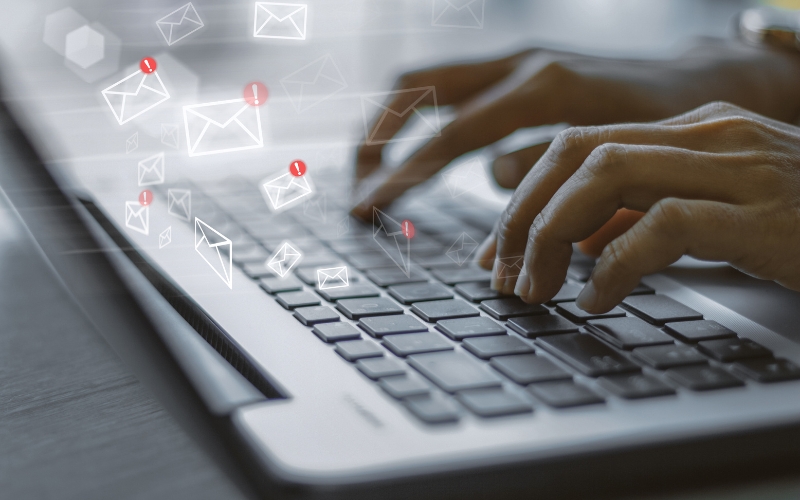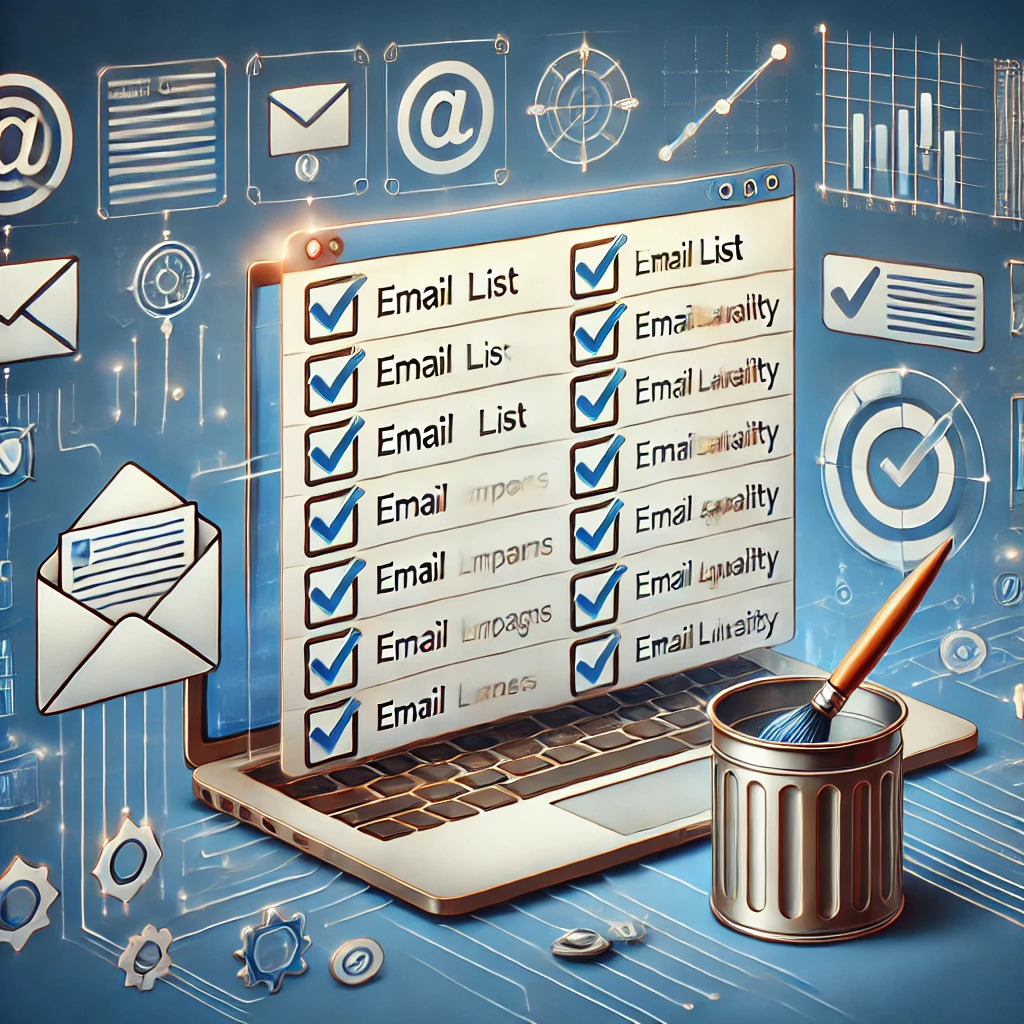Building and maintaining a high-quality email list is the foundation of successful email marketing. An engaged and well-managed email list enables businesses to communicate effectively with their audience, drive conversions, and enhance customer relationships. However, creating an email list isn’t just about collecting addresses—it’s about gathering the right contacts, segmenting them for targeted campaigns, and regularly maintaining list hygiene. In this article, we’ll explore key strategies for building a high-quality email list, best practices for segmenting your list for better targeting, and the importance of email list hygiene to ensure your campaigns remain effective and efficient.
Strategies for Building a High-Quality Email List

Building a high-quality email list is crucial for the success of your email marketing campaigns. A well-curated list can lead to higher engagement rates, better conversions, and ultimately, a more profitable business. To achieve this, it’s important to employ effective strategies that attract the right subscribers. Here are some key methods for building a valuable email list.
Creating Compelling Lead Magnets
A lead magnet is an incentive offered to potential subscribers in exchange for their email address. It’s a powerful way to attract users who are genuinely interested in your products or services. To create a compelling lead magnet, consider offering something of immediate value to your target audience. Popular lead magnets include:
- eBooks or Guides: Offer a free, downloadable resource that addresses a problem or provides valuable information your audience will find useful. For example, a business selling fitness products might offer an “Ultimate Guide to Healthy Eating” in exchange for email sign-ups.
- Checklists or Templates: These are especially effective for providing actionable, step-by-step instructions. For instance, a marketing agency might offer a “Social Media Content Calendar Template” to help subscribers stay organized.
- Discounts or Special Offers: Offering a discount on first-time purchases or exclusive deals can motivate potential customers to join your email list. This is an especially effective tactic for e-commerce businesses.
When designing your lead magnet, ensure it directly addresses the pain points or interests of your target audience. The more relevant and valuable it is, the more likely users will be to share their email addresses.
Offering Value Upfront
Another key aspect of building a high-quality email list is offering value upfront. When users subscribe to your email list, they should immediately feel like they are gaining something useful. This could be in the form of useful tips, exclusive offers, or access to premium content.
For example, instead of simply asking for an email in exchange for occasional newsletters, offer a free resource like an ebook or an exclusive webinar upon subscribing. By offering something useful right away, you demonstrate the value of remaining on your email list and set the tone for future emails. This approach will not only encourage users to sign up but also help in nurturing relationships with new subscribers.
Leveraging Social Media, Website Pop-Ups, and Events
Growing your email list is about meeting your audience where they are. Social media platforms are an excellent way to promote your email sign-up opportunities. Regularly share links to your lead magnet or a call to action to subscribe to your email list on your social channels.
Website pop-ups are another effective tool. While they should be used sparingly to avoid annoying users, pop-ups that appear after a certain amount of time or after users scroll through your content are great for capturing email addresses without disrupting the user experience. Offering an incentive like a discount or exclusive content through the pop-up can encourage sign-ups.
Hosting events such as webinars, live Q&A sessions, or online workshops is also an excellent opportunity to collect email addresses. By requiring attendees to register with their email address for event access, you can build a targeted list of interested users. Additionally, after the event, you can follow up with attendees, providing them more value through email.
By creating compelling lead magnets, offering value upfront, and leveraging social media, website pop-ups, and events, you can steadily grow a high-quality email list that engages your audience and drives business success. These strategies ensure that your list is filled with subscribers who are genuinely interested in what you offer, increasing the likelihood of conversions in future campaigns.
Best Practices for Segmenting Your Email List for Better Targeting

Effective email segmentation is one of the most powerful tools in a marketer’s arsenal. It allows you to send more personalized, relevant content to your subscribers, increasing engagement and boosting conversions. When your messages align with the interests and behaviors of your audience, you’re more likely to see positive results. Here’s how to properly segment your email list for better targeting.
Why Segmenting Your Email List is Essential for Personalized Email Campaigns
Segmentation allows you to break down your email list into smaller, more specific groups based on shared characteristics. This approach enables you to tailor your messages to each group, making them more relevant and engaging. Without segmentation, your emails risk being generic and irrelevant, leading to higher unsubscribe rates and lower open rates. Personalized email campaigns, on the other hand, tend to have significantly better engagement. In fact, studies show that segmented email campaigns can drive up to 760% more revenue than non-segmented campaigns.
By segmenting your list, you ensure that your emails resonate with each recipient, offering them the content, products, or services they are most likely to be interested in, which ultimately drives more conversions.
How to Categorize Your List Based on Demographics, Behavior, and Engagement
Segmenting your email list involves categorizing subscribers based on different criteria. Here are some of the most effective ways to segment:
- Demographics: This involves grouping subscribers based on characteristics like age, gender, income level, or geographic location. For example, a clothing store might send one email campaign promoting winter jackets to customers in cold climates, while sending a lighter promotional offer for summer wear to those in warmer regions.
- Behavior: Segmenting by behavior means grouping subscribers based on how they interact with your website or past emails. For example, if someone has clicked on a link to a particular product in your past emails, you can send follow-up emails promoting similar items or offering discounts for that product. Behavior-based segmentation also includes purchase history, where subscribers who have previously purchased a product may be targeted with emails promoting related products.
- Engagement: Engagement-based segmentation categorizes subscribers based on how they interact with your emails. You can segment your list into groups such as “active subscribers,” “inactive subscribers,” and “engaged leads.” Active subscribers might receive frequent updates, while less engaged subscribers might get re-engagement campaigns with special offers or content that reignites their interest.
Examples of Effective Segmentation Strategies for Various Business Types
Different businesses can benefit from different segmentation strategies:
- E-commerce Business: An e-commerce store could segment customers based on their purchase behavior, such as frequent shoppers, first-time buyers, or customers who abandoned their shopping carts. You could send special offers to frequent buyers or abandoned cart reminders to those who didn’t complete their purchase.
- Subscription Services: Subscription-based businesses might segment their list by subscription type (e.g., monthly vs. yearly) or engagement (active users vs. inactive users). For example, inactive users could receive special re-engagement emails offering them discounts or new features.
- Content-Based Businesses: If you run a blog or content-driven site, you can segment your email list based on the topics subscribers have shown interest in. For example, someone who frequently clicks on marketing-related content might receive targeted offers for related webinars or courses.
By using segmentation strategies such as categorizing by demographics, behavior, and engagement, you can send targeted, personalized messages to your audience. This not only increases the relevance of your campaigns but also leads to higher open rates, better engagement, and ultimately, more conversions. Tailoring your approach to the unique needs of different groups within your audience can make a significant difference in the performance of your email marketing efforts.
Email List Hygiene: Maintaining a Clean and Engaged Subscriber Base

Maintaining a clean and engaged email list is a key component of successful email marketing. A healthy email list ensures better deliverability, higher open rates, and improved engagement. Over time, inactive subscribers and invalid email addresses can drag down your results, leading to wasted resources and lower effectiveness. Regularly cleaning and managing your email list is essential to maximizing the value of your campaigns. Here’s why and how you should maintain your email list hygiene.
The Significance of Regularly Cleaning Your Email List to Remove Inactive Subscribers
One of the most crucial aspects of email list hygiene is removing inactive subscribers. Inactive subscribers are those who haven’t opened or engaged with your emails for a significant period of time. Keeping these contacts on your list can hurt your sender reputation and affect your email deliverability, leading to your emails being marked as spam or not being delivered at all.
Removing inactive subscribers ensures that you’re only sending emails to individuals who are genuinely interested in your content or offers. This not only boosts engagement rates but also enhances your overall campaign performance. Regular cleaning of your email list helps keep your metrics accurate and allows you to focus your efforts on nurturing engaged leads. A good rule of thumb is to remove or re-engage subscribers who haven’t interacted with your emails in the past 6 months to a year, depending on your industry and frequency of communication.
How to Re-Engage Lapsed Subscribers with Targeted Campaigns
Rather than simply removing inactive subscribers, consider running targeted re-engagement campaigns to win them back. A re-engagement campaign typically involves sending a special email offering something of value, such as discounts, exclusive content, or a survey to understand their preferences. The goal is to remind them of your brand and re-spark their interest.
For example, if a subscriber hasn’t opened your emails in several months, a campaign offering a time-limited discount or a compelling subject line like “We Miss You! Here’s 20% Off Your Next Purchase” could encourage them to return. Additionally, a “we’d love to hear from you” email can give you insight into why they stopped engaging, which allows you to further personalize future campaigns.
If these re-engagement efforts don’t succeed, consider removing them from your list, as sending emails to unresponsive subscribers can hurt your email performance.
Tools and Methods for Managing Bounces, Unsubscribes, and Invalid Email Addresses
Managing bounces, unsubscribes, and invalid email addresses is critical to maintaining list hygiene. Here are some tools and strategies to keep your list in top shape:
- Email Validation Tools: Use tools like ZeroBounce, NeverBounce, or BriteVerify to identify invalid email addresses and remove them from your list. These services can detect and eliminate hard bounces (emails that are undeliverable) before you even send out campaigns.
- Automatic Unsubscribe Management: Most email marketing platforms (e.g., Mailchimp, Constant Contact) have built-in unsubscribe management features that automatically remove contacts who choose to opt-out. Keeping this process automated ensures compliance with laws like GDPR and CAN-SPAM, while keeping your list clean.
- Bounce Handling: Bounce management is a key feature provided by most email service providers. When you send an email to an address that doesn’t exist, a hard bounce occurs, and these emails should be immediately removed. Soft bounces, which are temporary delivery failures, may require follow-up or a retry after a few days.
In conclusion, maintaining a clean and engaged email list is essential for the success of your email marketing efforts. Regularly cleaning your list to remove inactive subscribers, running targeted re-engagement campaigns, and using tools to manage bounces and unsubscribes ensures higher deliverability, better engagement rates, and overall campaign effectiveness. By focusing on email list hygiene, you can ensure that your emails reach the right people, maximizing your marketing ROI.
Conclusion
In conclusion, an effective email marketing strategy relies on more than just sending messages to a large list of contacts. By focusing on building a high-quality email list with compelling lead magnets, segmenting your list for personalized targeting, and maintaining list hygiene, you can significantly improve engagement and conversion rates. Regularly cleaning your list, re-engaging inactive subscribers, and using tools to manage bounces and unsubscribes will keep your campaigns running smoothly, ensuring you get the most out of every email you send. With these best practices, you’ll not only grow your subscriber base but also create meaningful connections that drive long-term success.

